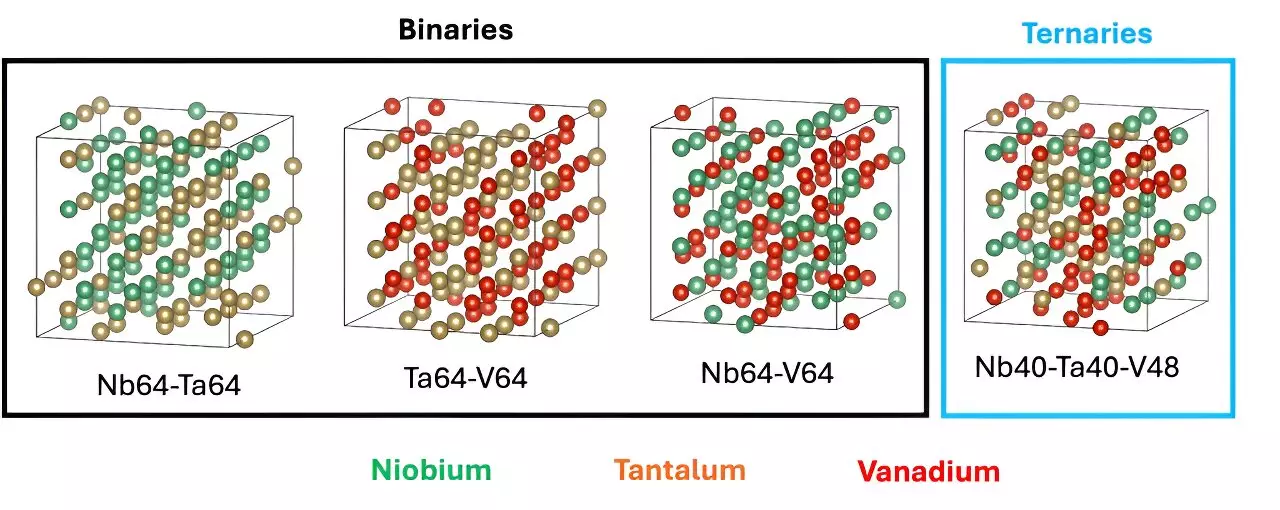The field of nuclear fusion is on the brink of transformation thanks to a groundbreaking study conducted by researchers at the Oak Ridge National Laboratory (ORNL). This initiative, primarily driven by advancements in artificial intelligence (AI), aims to enhance the materials used for shielding components in fusion reactors, an essential factor for achieving operational stability and safety in these cutting-edge facilities. Under the guidance of Massimiliano Lupo Pasini and his team, this research has laid the groundwork for a new era in the quest for suitable materials capable of withstanding the harsh conditions associated with nuclear fusion.
From Traditional Alloys to Innovative Solutions
Historically, the primary material utilized for shielding in nuclear reactors has been tungsten, praised for its high-temperature resistance. However, this reliance on tungsten and conventional alloy compositions presents certain inefficiencies, particularly when it comes to stabilizing shielding performance at elevated temperatures. Lupo Pasini’s team acknowledges a significant shift in the material science landscape: rather than sticking to time-tested options, researchers are now pursuing novel metallic combinations capable of meeting the rigorous demands of fusion environments. The challenge, however, lies in the almost limitless number of potential alloy combinations, making traditional methods of material exploration seem archaic.
By leveraging AI technologies, this initiative intends not just to find new combinations of metals but to expedite the discovery process. The ability of AI to manage and analyze large data sets means researchers can identify promising candidates without undergoing extensive and time-consuming trial and error. The impact of such automation could be far-reaching, significantly improving efficiency in alloy development.
The study brought together a multidisciplinary team of scientists, including German Samolyuk, Jong Youl Choi, Markus Eisenbach, Junqi Yin, and Ying Yang, to develop an AI model capable of assessing various metallic combinations. Each team member contributed from different directorates within ORNL, pooling their expertise to generate a robust dataset intended for further AI training. This collaborative approach highlights not only the technical complexity involved but also the importance of teamwork in tackling the challenges associated with nuclear material research.
The outcome of their research is a newly developed AI framework that has identified three candidate elements for testing as part of new alloy compositions. Yet, as impressive as this first step is, it only represents the beginning of a much larger endeavor. The goal is to explore six elemental categories to achieve a more comprehensive understanding of how different elements can synergize to create effective high-entropy alloys.
In addition to the complexities of material combination, the research team faced significant computational hurdles. The quantum mechanical calculations needed to validate their findings are notoriously resource-intensive. This led to time spent on advanced computational platforms such as the Perlmutter and Summit supercomputers, with data generation spanning over a year. The high computational costs and extensive processing time underscore the dual challenges of material exploration, where both innovative approaches and formidable computational power are required to propel the research forward.
As their investigation continues, the team aims to optimize the AI model using the data they’ve generated, which would simplify the process of mixing different elements in variable concentrations—essential for developing advanced alloys. The aspiration is clear: to assist material scientists in determining the correct proportions of various elements to create hybrids that could usher in significant technological advancements in fusion energy.
The work being undertaken at ORNL represents a remarkable confluence of material science and artificial intelligence, pushing the envelope of what is possible in fusion technology. By harnessing the speed and analytical power of AI, researchers hope to unlock new pathways for developing materials that not only meet the immense demands of nuclear fusion but also open avenues for disruptive technological innovations.
As the quest for practical fusion energy continues, the integration of AI in alloy discovery signifies not just progress in a specific scientific domain but a rethinking of how interdisciplinary collaboration can yield results in one of humanity’s most challenging energy endeavors. In the coming years, the conclusive findings of this research might lead to the evolution of fusion reactor technologies, potentially elevating their efficiency and safety to unprecedented levels.


Leave a Reply